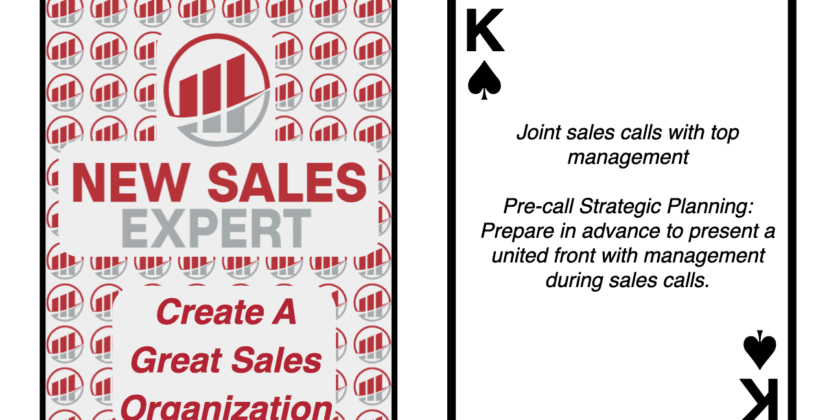Few topics in sales stir as much discussion and attention as compensation plans. The proper compensation structure can ignite a team’s performance, attract top talent, and drive a company toward its strategic goals. Conversely, a poorly conceived plan can lead to demotivation, high turnover, and missed targets. This discussion delves into the intricacies of designing compensation plans that motivate and align with a company’s broader objectives, offering insights for salespeople, sales managers, and CEOs alike.
Compensation in sales is not just about rewarding past successes; it’s a strategic tool that shapes future behavior. The fundamental premise is straightforward: sales professionals are motivated by earnings potential. Yet, applying this premise within compensation plans can be complex, nuanced, and sometimes contentious. It’s essential to balance base salary and variable compensation, ensuring sales representatives are adequately supported and incentivized to pursue new business aggressively.
The debate between 100% commission versus a guaranteed salary represents the spectrum of risk and reward in sales compensation. On one end, a 100% commission plan offers unlimited earning potential but lacks security, potentially leading to a high-stress culture and a short-term focus. It also makes it much more difficult to recruit younger sales superstars who may not have the financial security to afford a 100% commission compensation plan. Conversely, a guaranteed salary provides stability but might dampen the urgency and hunger that drive sales excellence. The consensus among seasoned sales leaders points to a balanced approach, often epitomized by a 50/50 split between base salary and variable compensation. This structure aims to provide a safety net while ensuring sales efforts directly impact earnings.
Understanding the market potential within a sales representative’s territory is critical when setting quotas and compensation. For larger teams, the ability to average performance across the group can help smooth out individual variances. However, in smaller teams or founder-led sales organizations, each member’s contribution is magnified, demanding a more nuanced approach to quota setting. Regardless of team size, aligning individual quotas with company objectives requires a blend of data analysis, market insight, and an appreciation for each territory’s unique challenges and opportunities.
Beyond the structure of compensation plans, the timing and criteria for payouts are pivotal. Monthly payouts can incentivize immediate results and help maintain momentum, whereas quarterly payouts may lead to strategic deal timing but can also introduce cash flow challenges for sales professionals. Moreover, compensation plans should evolve in tandem with a company’s strategic goals, ensuring that sales efforts are aligned with the organization’s overarching priorities.
Crafting effective sales compensation plans is both an art and a science. It demands a deep understanding of human motivation, a clear vision of company objectives, and a commitment to fairness and transparency. By carefully designing compensation structures that reward performance, foster team collaboration, and support long-term strategic goals, companies can create a sales culture that not only meets targets but exceeds them, driving growth and success in the competitive world of B2B sales.
Immediate Action Item 1: Evaluate and Adjust Your Compensation Structure
Assessment of Current Plans: Begin by thoroughly assessing your current sales compensation plan. This involves evaluating how well the existing structure supports your company’s strategic goals and motivates your sales team. Are your sales representatives meeting their targets? Do they feel motivated and supported? These questions can uncover valuable insights into the effectiveness of your compensation plan.
Balanced Compensation Review: Reflect on the balance between your organization’s base salary and variable compensation. Does it align with the 50/50 split recommended by seasoned sales leaders? If not, consider adjusting this balance to provide both security and incentive to your sales team. This balance is crucial for motivating your team while ensuring they are adequately supported.
Action Steps:
- Survey your sales team to gather feedback on the current compensation plan.
- Analyze sales performance data to identify patterns or areas for improvement.
- Consult with HR or compensation specialists to explore potential adjustments.
- Implement a pilot program for a new compensation structure in a small team or region to measure its impact before a company-wide rollout.
Immediate Action Item 2: Align Compensation with Strategic Goals and Territory Potential
Quota Setting and Territory Analysis: It’s essential to align individual quotas with the sales territory’s potential and the overarching company objectives. This alignment ensures that sales efforts are directed towards strategic goals, optimizing both individual and team performance.
Compensation Plan Evolution: Regularly review and update your compensation plans to align with your company’s strategic goals. This might mean adjusting the payout criteria, the balance between base and variable compensation, or the targets set for sales representatives.
Action Steps:
- Conduct a territory analysis to ensure realistic quotas align with market potential.
- Set up a quarterly review process for the compensation plan to ensure it remains aligned with company objectives and market conditions.
- Engage sales managers in discussions about territory potential and strategic goals to ensure their input is considered in compensation planning.
- Communicate changes in compensation plans clearly and effectively to the entire sales team, ensuring they understand how these changes benefit both them and the company.
Implementing these action items can lead to a more motivated sales team, better alignment with strategic goals, and improved sales performance. Remember, the key to successful sales compensation is not just in the design but in the ongoing evaluation and adjustment to meet the evolving needs of both your sales team and your company.










